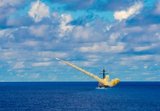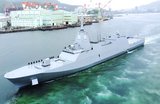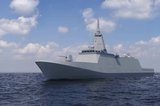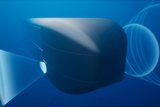Ford-class carriers still struggle to hit design targets, says DOT&E
USS Gerald R. Ford (CVN 78) successfully completed the second of three scheduled explosive events for Full Ship Shock Trials (FSST) on 16 July 2021. (Photo: USN)
The results of a Full-Ship Shock Trial for the USN aircraft carrier Gerald R. Ford (CVN 78) revealed 'several' design shortfalls, according to the FY2021 annual report from the Director Operational Test & Evaluation (DOT&E) in the DoD.
The report notes that issues arising from the FSST were not previously discovered by modelling and simulation or component-level testing, adding that addressing the shortfalls could improve the Ford-class carriers' survivability against underwater threats.
The DOT&E report said that while shock trial data analysis is still ongoing, the USN had already identified several survivability improvements.
The USN conducted an FSST on USS Gerald R.
Already have an account? Log in
Want to keep reading this article?
More from Naval Warfare
-
![NATO tests use of “undetectable, jam-proof” laser communication in maritime scenarios]()
NATO tests use of “undetectable, jam-proof” laser communication in maritime scenarios
As part of its effort to better prepare its capabilities for operations in contested and congested scenarios, NATO evaluated a Lithuanian ship-to-ship terminal designed to not be susceptible to enemy interference.
-
![Future of the Canadian Patrol Submarine Project is still unclear]()
Future of the Canadian Patrol Submarine Project is still unclear
The Canadian government remains tight-lipped on the timeline and funding required for the next steps of its Canadian Submarine Patrol Project, which should offer improved capabilities for the country’s navy.
-
![Mitsubishi eyes future with Australia’s Mogami selection]()
Mitsubishi eyes future with Australia’s Mogami selection
With Australia’s selection of the Mogami-class for Project Sea 3000, Mitsubishi is investigating local production in the next decade as potential export opportunities emerge.
-
![Thales’ new Sonar 76Nano could equip UK Royal Navy on anti-submarine warfare missions]()
Thales’ new Sonar 76Nano could equip UK Royal Navy on anti-submarine warfare missions
The new sonar is designed to equip uncrewed underwater vessels, with the potential to be used by the Royal Navy for its Atlantic Bastion and Atlantic Net missions.























